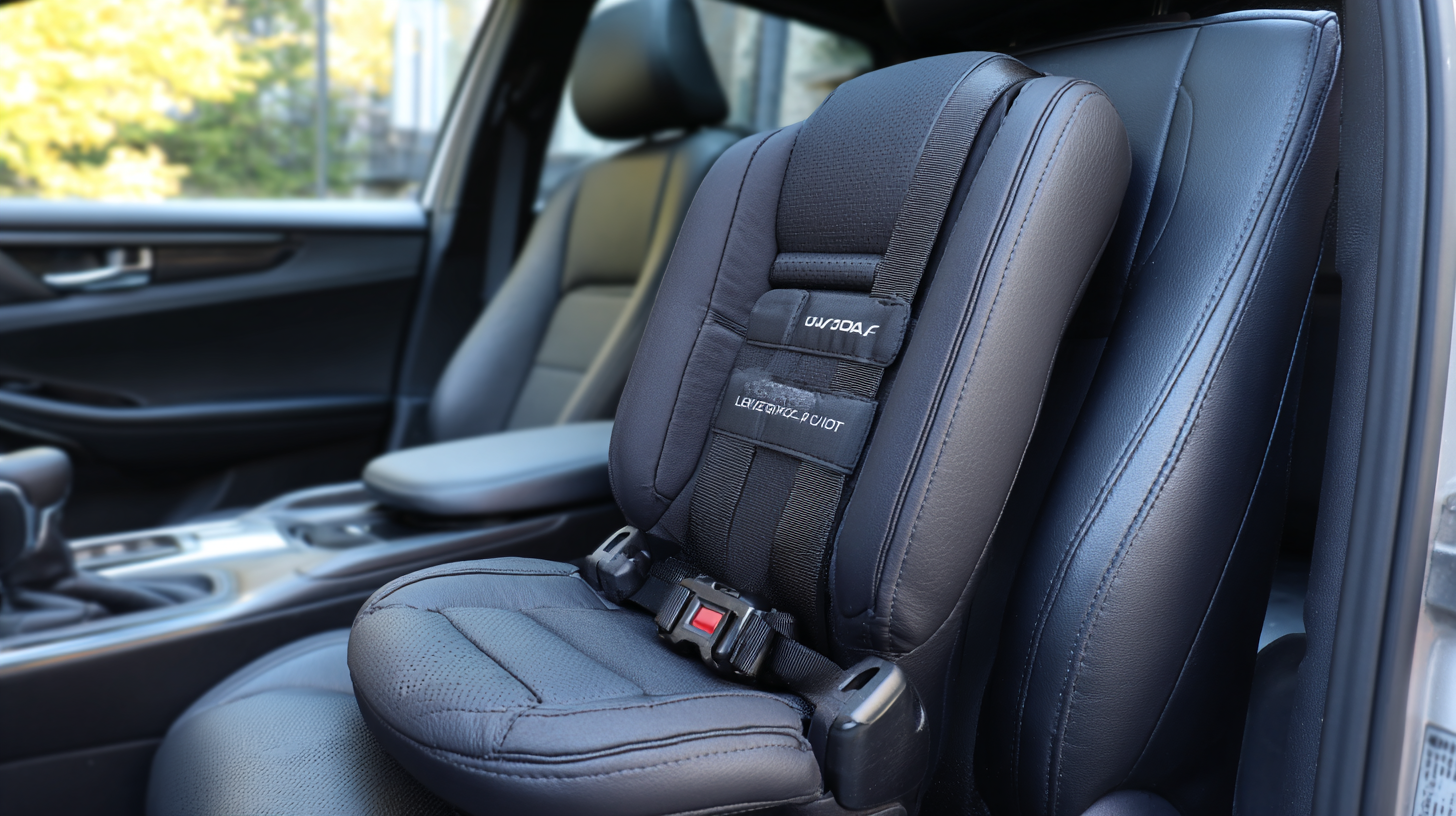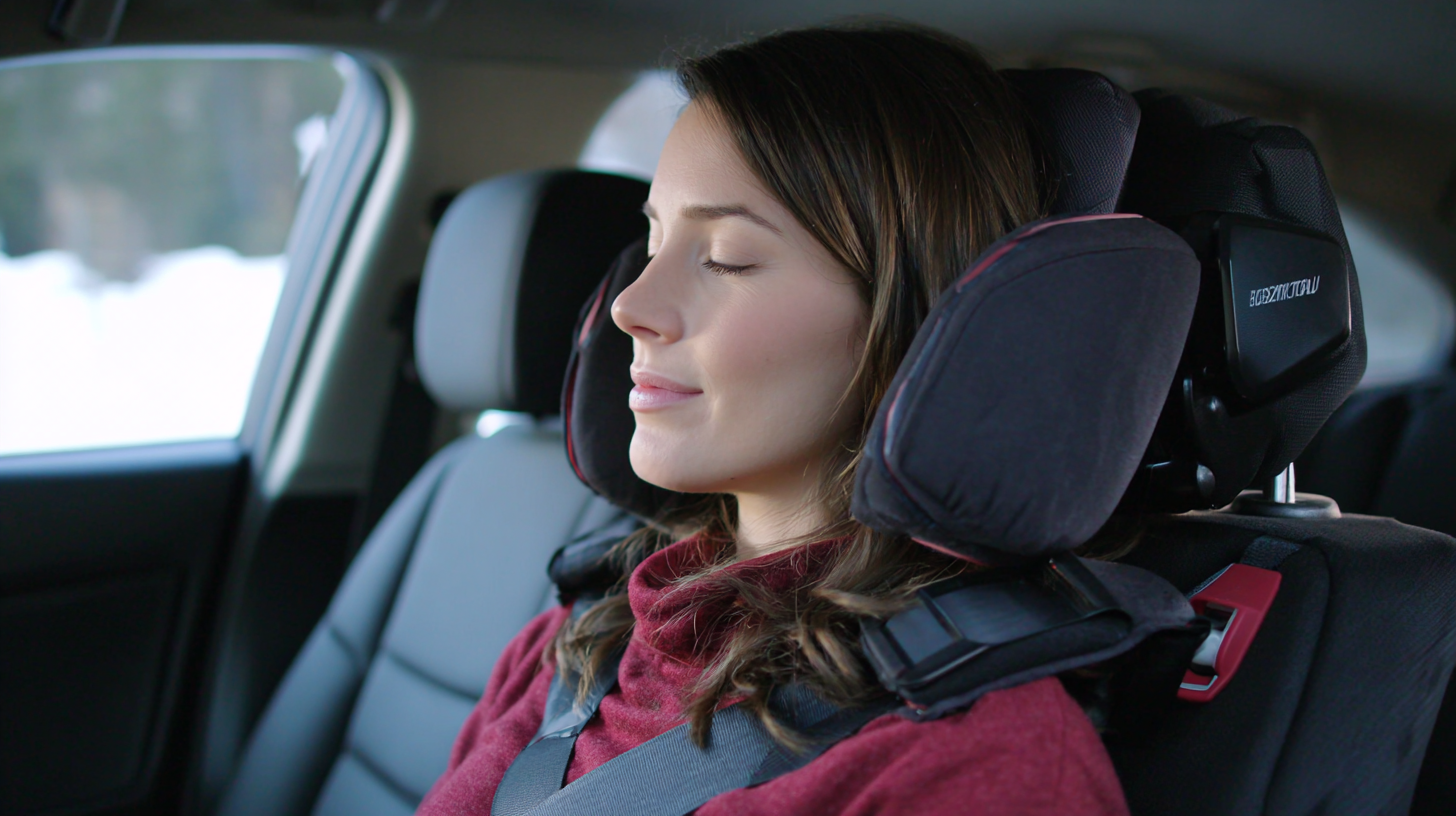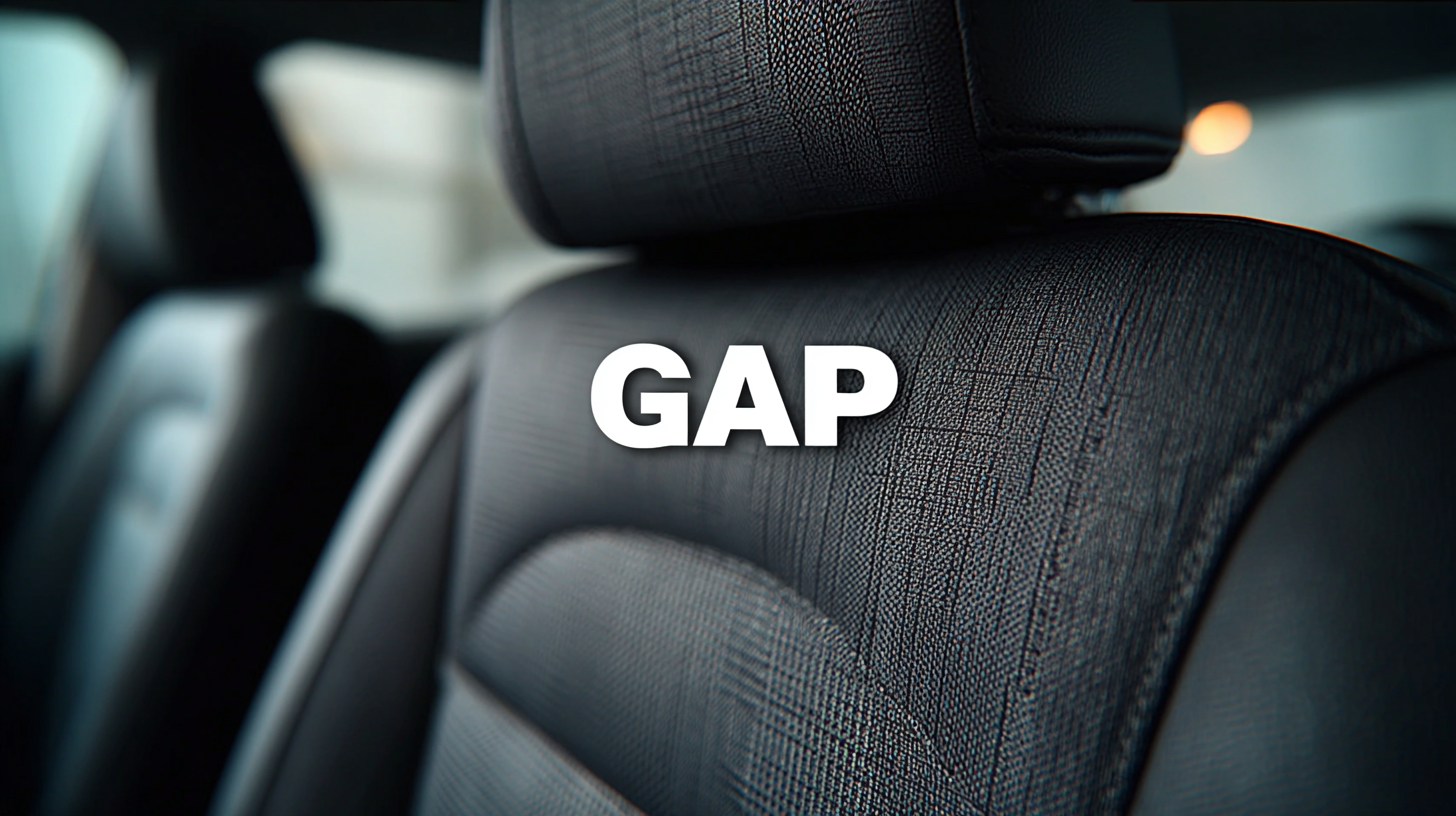As we look ahead to 2025, the automotive industry is poised for a wave of safety innovations that will redefine passenger safety and convenience in vehicles. Among these advancements, the humble yet essential Car Seat Gap Filler emerges as a key accessory that addresses a common issue faced by drivers and passengers alike: the dreaded gaps between car seats. With an increasing focus on enhancing user experience and minimizing distractions, manufacturers are integrating smart designs and materials into Car Seat Gap Fillers that not only prevent lost items from slipping into those hard-to-reach spaces but also promote a safer driving environment.

In this article, we will explore the best Car Seat Gap Fillers available in 2025, highlighting their unique features and the compelling reasons why investing in one can significantly enhance your driving experience, ensuring that both safety and convenience drive your choice of vehicle accessories.
Car seat gap fillers may seem like simple accessories, but their role in enhancing automotive safety cannot be underestimated. These innovative products are designed to effectively fill the gaps between car seats and central consoles, preventing small items like keys, coins, and mobile phones from falling into hard-to-reach areas. In 2025, as vehicle designs become more sophisticated, the need for these fillers will only grow. By keeping distractions at bay, car seat gap fillers help drivers maintain focus on the road, significantly reducing the risk of accidents.
Moreover, the importance of car seat gap fillers extends beyond just convenience. Many models are equipped with additional safety features, such as non-slip surfaces and durability against impact. These qualities ensure that the fillers not only remain securely in place during sudden stops or collisions but also provide an extra layer of protection for passengers. As automotive safety innovations evolve, incorporating practical solutions like car seat gap fillers will become crucial for consumers looking to enhance their vehicle's safety profile. Embracing these advancements is essential for making informed choices when selecting the best car accessories for a safer driving experience.

When searching for a high-quality car seat gap filler, there are several key features that can enhance your driving experience. One of the primary aspects to consider is the material used. Opt for a filler made of durable, non-toxic materials that can withstand wear and tear while also being safe for your family. Foam or fabric options provide comfort, while silicone offers excellent longevity and ease of cleaning.
Another essential feature is the design and fit of the gap filler. A well-designed filler should seamlessly fit into your car's seat gaps without any bulk. Many models come with adjustable straps or flexible edges that conform to various car models, ensuring a snug fit that doesn’t interfere with seatbelt functions.
Tip: Always measure the gap between your seats before purchasing to guarantee an ideal fit. Additionally, look for a gap filler with anti-slip properties to prevent it from moving around as you drive. Finally, consider a filler that includes pockets or compartments for added storage, making it a practical addition for keeping your vehicle organized.
| Feature | Description | Materials | Compatibility | Price Range (USD) |
|---|---|---|---|---|
| Adjustable Fit | Easily adjustable to fit various car seat sizes and gaps. | High-density foam, Silicone | Most standard vehicles | 15 - 30 |
| Non-Slip Design | Designed to stay securely in place during driving. | Rubber, Textile | Sedans, SUVs, Minivans | 20 - 40 |
| Easy Installation | Quick and intuitive setup with no tools required. | Polyester, Foam | Universal fit for most vehicles | 10 - 25 |
| Durability | Made to withstand wear and tear over time. | Vinyl, Neoprene | Coupe, Convertible | 30 - 60 |
| Washable Cover | Cover can be removed and machine washed for easy cleaning. | Cotton Blend | Family cars, Taxi | 20 - 35 |
In the fast-evolving landscape of automotive safety, the role of gap fillers has become increasingly significant in 2025. As manufacturers focus on enhancing passenger protection, these innovative accessories are designed to complement traditional safety features by preventing small items — and potential hazards — from slipping into hard-to-reach areas between car seats. This not only reduces distractions for drivers but also improves the overall safety of all passengers in the vehicle.

Moreover, advancements in materials and design have led to the development of gap fillers that are not only functional but also stylish. Options now include high-grade, durable materials that are easy to clean and integrate seamlessly with various car interiors. The latest designs also incorporate features such as storage compartments, further optimizing space and ensuring that essential items remain within reach while traveling. As consumers become more safety-conscious, gap fillers are emerging as an essential accessory that combines practicality with innovation, reinforcing the commitment to automotive safety in 2025 and beyond.
Navigating the landscape of automotive accessories, particularly car seat gap fillers, requires a thorough understanding of import and export certifications. With the automotive accessories market projected to reach $200 billion by 2025, compliance with international regulatory standards is critical for manufacturers and distributors alike. This ensures not only safety and quality but also enhances marketability in a highly competitive environment. According to the International Organization for Standardization (ISO), over 50% of automotive accessory manufacturers have faced challenges in meeting certification requirements due to varying regional regulations.
Moreover, the significance of certifications extends beyond compliance; they play a pivotal role in consumer trust and product reliability. In a survey conducted by the Automotive Industry Association, 78% of consumers reported that they are more likely to purchase products that meet recognized safety standards. Consequently, adhering to certifications such as the Federal Motor Vehicle Safety Standards (FMVSS) in the U.S. and the European Union’s General Product Safety Directive is essential for companies aiming to penetrate global markets. Understanding these certification processes not only facilitates smoother trade but also drives innovations in safety features, ultimately leading to better choices for consumers when selecting automotive accessories like car seat gap fillers.
When choosing the best car seat gap filler for your vehicle, it’s essential to consider both functionality and safety. Look for gap fillers that are specifically designed to prevent items from falling into the crevices between the seats, which can be both distracting and hazardous while driving.
Materials that are durable yet soft can provide the necessary cushioning without obstructing seat adjustments or causing discomfort.
Additionally, consider the design and fit of the gap filler. It should seamlessly blend with your vehicle's interior while also being easy to install and remove. Some models come with added features like storage pockets to keep essential items within reach, enhancing both convenience and organization. Make sure to check for compatibility with your vehicle's make and model to ensure a snug fit, as this can significantly affect the effectiveness of the car seat gap filler.
